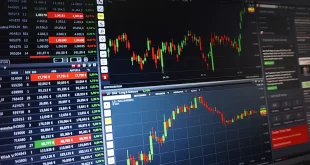An essential tool in the field of business analytics is data visualization. Decision-makers can more easily understand complex information and make wise decisions as a result of the transformation of raw data into relevant insights. Advanced data visualization techniques like histograms, waterfall charts, timelines, and network diagrams are becoming more and more common while basic charts like pie charts and bar charts are still often utilized. This essay will examine these cutting-edge data visualization methods and explain how business analytics might benefit from them.
- Pie charts
A straightforward yet powerful tool for representing the various components of a whole. They are perfect for showing how a category variable is distributed. Pie charts can be used in business analytics to show market share, product distribution, or budget allocation. However, they must be utilized with caution because too many categories might make them confusing and difficult to understand.
- Bar Chart:
Bar charts can be utilized in a variety of ways and are frequently employed in business analytics. They use rectangular bars to display categorical data, making it simple to compare data across multiple categories. Stacking bars to indicate numerous data factors at once can improve bar charts. For instance, a stacked bar chart that shows sales over time by product category can reveal important performance trends.
- Histograms
Crucial for comprehending how continuous data are distributed. They divide the data into intervals (bins) and show how frequently observations occur inside each bin. Histograms can be used in business analytics to examine employee performance ratings, product prices, and customer demographics. They aid in locating trends, outliers, and patterns in the data.
- Waterfall Chart:
When illustrating the cumulative effects of successively occurring positive and negative values, waterfall charts are superb. They are frequently employed in financial analysis to demonstrate how different elements affect a final sum. A waterfall chart, for instance, can show how monthly revenue is broken down into its constituent parts, such as new sales, upsells, and customer turnover.
- Timeline:
For recording events or data points through time, timelines are essential. In business analytics, they are particularly useful for visualizing historical data, trends, and patterns. timetables can be used to find patterns in client involvement, project timetables, or sales seasonality. In project management, Gantt charts, a particular kind of timeline, are frequently employed.
- Network Diagram:
A network diagram shows the connections between various entities. They are utilized in business analytics to display intricate networks including social networks, supply chains, and organizational hierarchies. Critical nodes, bottlenecks, and areas for network optimization can all be found using network diagrams.
Advanced data visualization techniques are crucial in the constantly changing field of business analytics for making sense of enormous and complex datasets. For displaying various forms of data, pie charts, bar charts, histograms, waterfall charts, timelines, and network diagrams each have specific benefits. Depending on the precise analytical objectives and the characteristics of the data being examined, the best visualization technique must be chosen. Businesses may obtain deeper insights, make data-driven decisions, and stay ahead in today’s competitive environment by utilizing the power of these cutting-edge techniques.
By AMIT KATARIA, founder of MADRID SOFTWARE
 Newspatrolling.com News cum Content Syndication Portal Online
Newspatrolling.com News cum Content Syndication Portal Online






